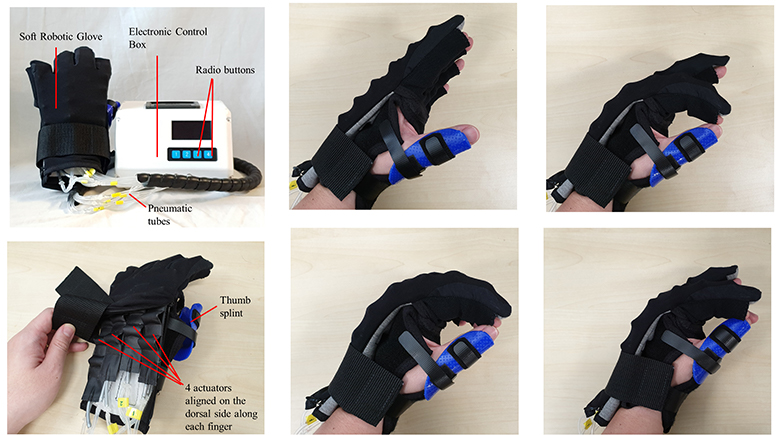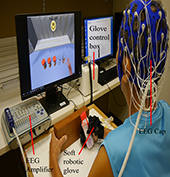
Upper limb impairment is common in stroke and can have a devastating impact on the daily lives of stroke survivors. Innovative rehabilitation strategies targeting motor impairments in stroke survivors include constraint-induced movement therapy, mirror therapy, and robot-aided therapy utilizing end effector systems. While these have been reported to be efficacious in several studies, they require a minimum level of residual movement of the paretic limbs, which excludes a significant proportion of stroke patients.
The use of brain-computer interface (BCI)-based motor imagery (MI) presents an alternative means of rehabilitation to address the issue of negligible residual motor function. MI is the mental rehearsal of physical movement tasks, and during MI, distinct features known as event-related desynchronization and synchronization are detectable on the subject’s electroencephalogram (EEG). These features can be used as input to a BCI, which translates them into control commands of output devices, triggering contingent sensory feedback for the subject, such as visual, somatosensory, and kinesthetic forms. This is aimed at manipulating the cortical reorganization of the lesioned hemisphere for beneficial neuroplasticity, which forms the neural basis for motor recovery post-stroke.
In this direction, in our work, a stroke rehabilitation system was developed, integrating EEG-based BCI-assisted motor imagery with an assistive soft robotic glove (BCI-SRG) and task-specific visual feedback. A two-arm randomized controlled feasibility study where stroke patients underwent a 6-week intervention showed probable trends of prolonged improvements in FMA and ARAT scores over the span of 24 weeks although no significant intergroup differences were observed during the study. All of the patients in the BCI-SRG group also experienced an interesting phenomenon of vivid kinesthetic illusion lasting beyond the active intervention period. This may suggest that BCI-SRG which features concomitant virtual, mental and physical feedback on activities of daily living might be able to illicit sustained functional improvements.

